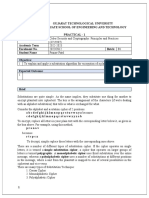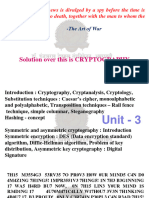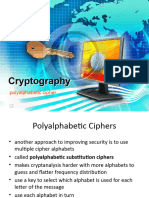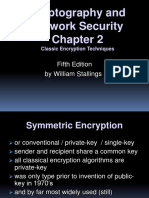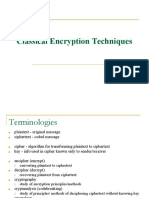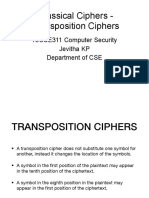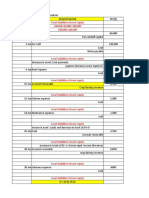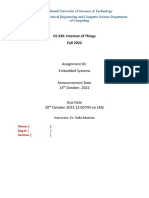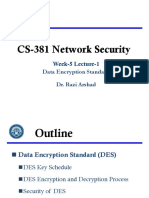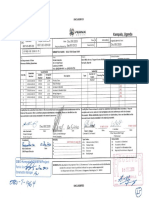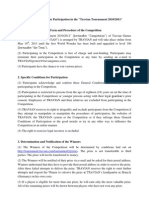0% found this document useful (0 votes)
76 views14 pagesWeek 3 - Lecture 2
Classical encryption techniques discussed include:
1. Substitution ciphers like the Caesar cipher and polyalphabetic ciphers like the Vigenere cipher.
2. The Vernam cipher/one-time pad introduced in 1918 which operates on binary data using a random key as long as the plaintext.
3. Transposition ciphers like the rail fence cipher and block/columnar transposition ciphers which rearrange the letter order of the plaintext.
Uploaded by
Hasan AhmedCopyright
© © All Rights Reserved
We take content rights seriously. If you suspect this is your content, claim it here.
Available Formats
Download as PDF, TXT or read online on Scribd
0% found this document useful (0 votes)
76 views14 pagesWeek 3 - Lecture 2
Classical encryption techniques discussed include:
1. Substitution ciphers like the Caesar cipher and polyalphabetic ciphers like the Vigenere cipher.
2. The Vernam cipher/one-time pad introduced in 1918 which operates on binary data using a random key as long as the plaintext.
3. Transposition ciphers like the rail fence cipher and block/columnar transposition ciphers which rearrange the letter order of the plaintext.
Uploaded by
Hasan AhmedCopyright
© © All Rights Reserved
We take content rights seriously. If you suspect this is your content, claim it here.
Available Formats
Download as PDF, TXT or read online on Scribd
/ 14






















